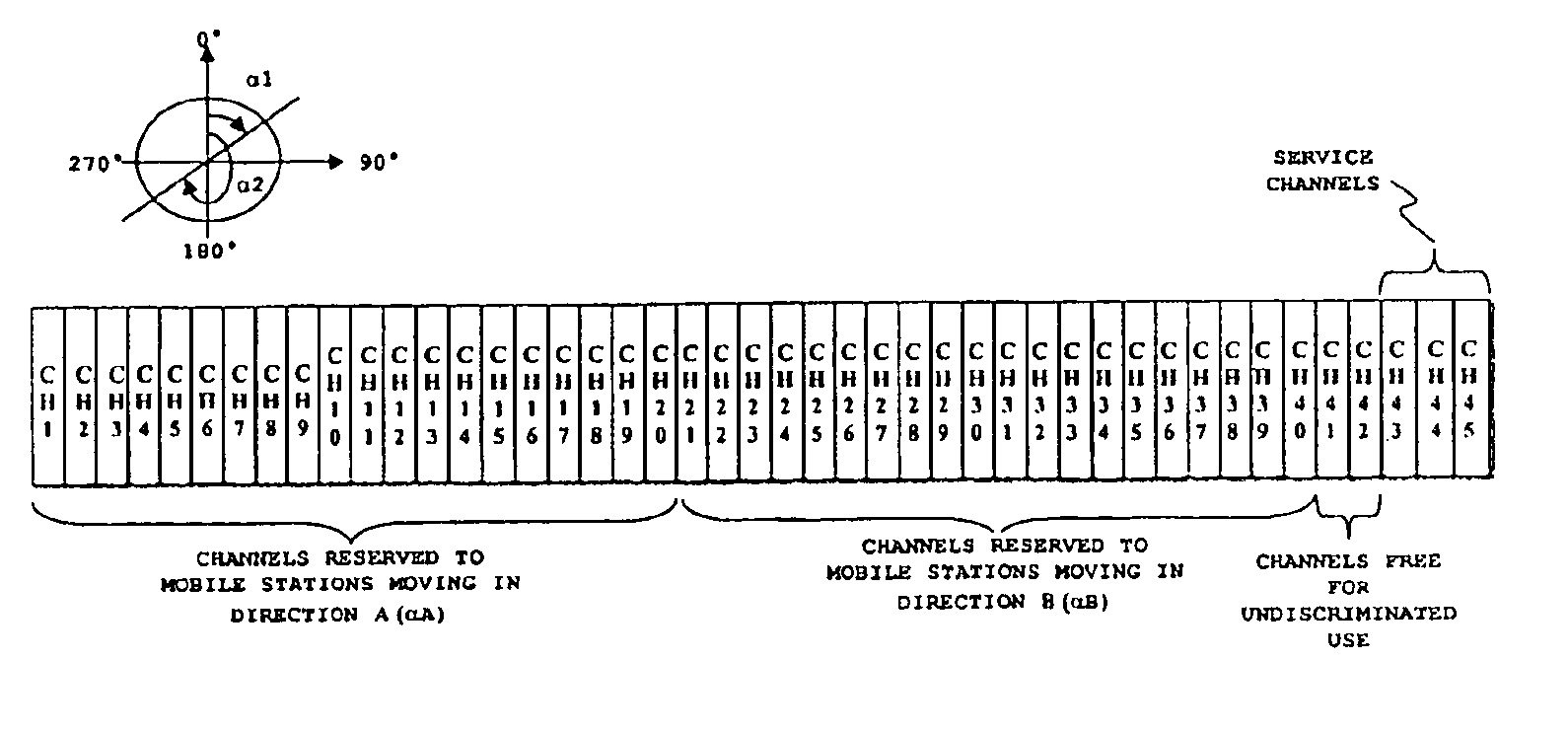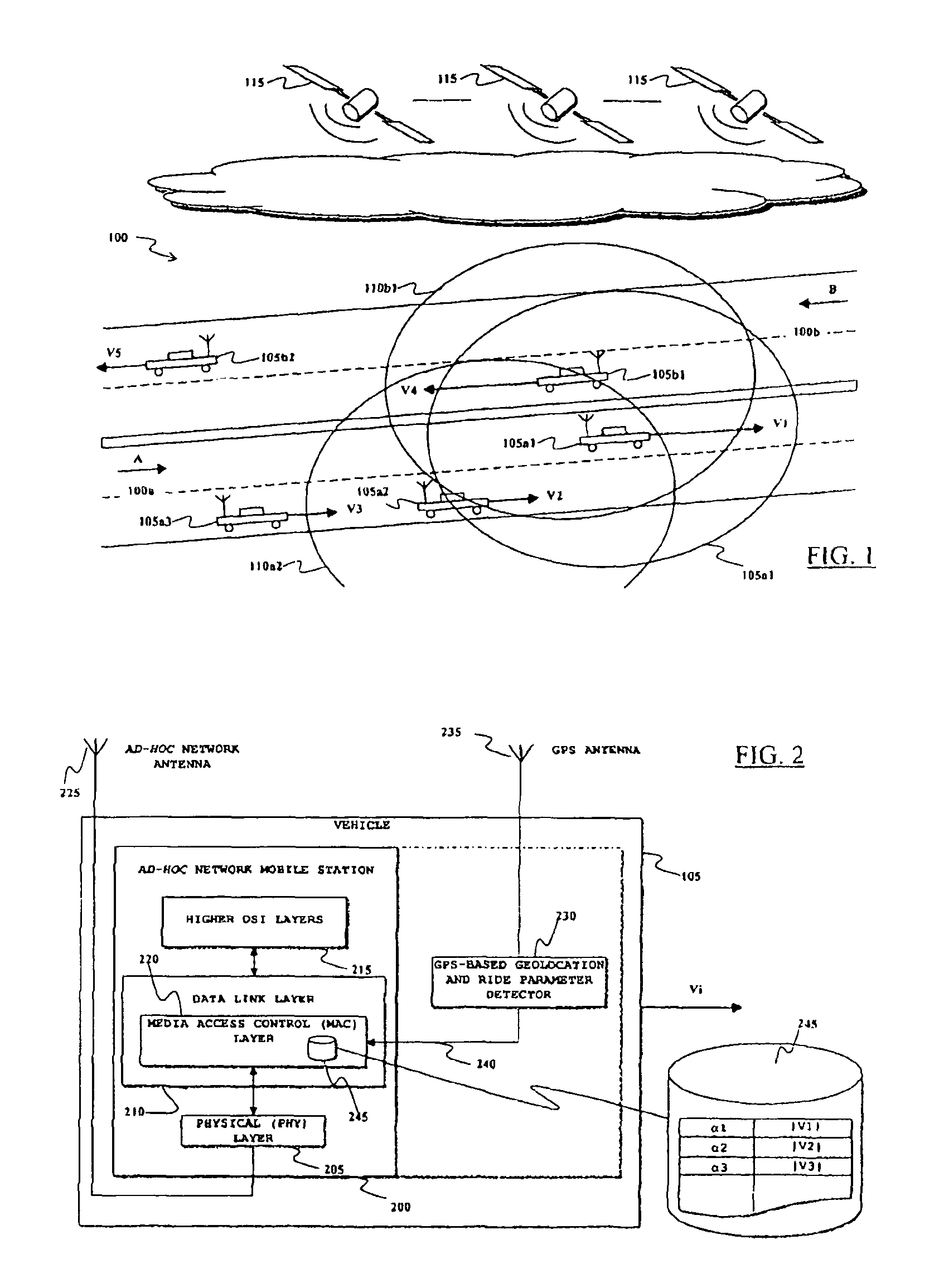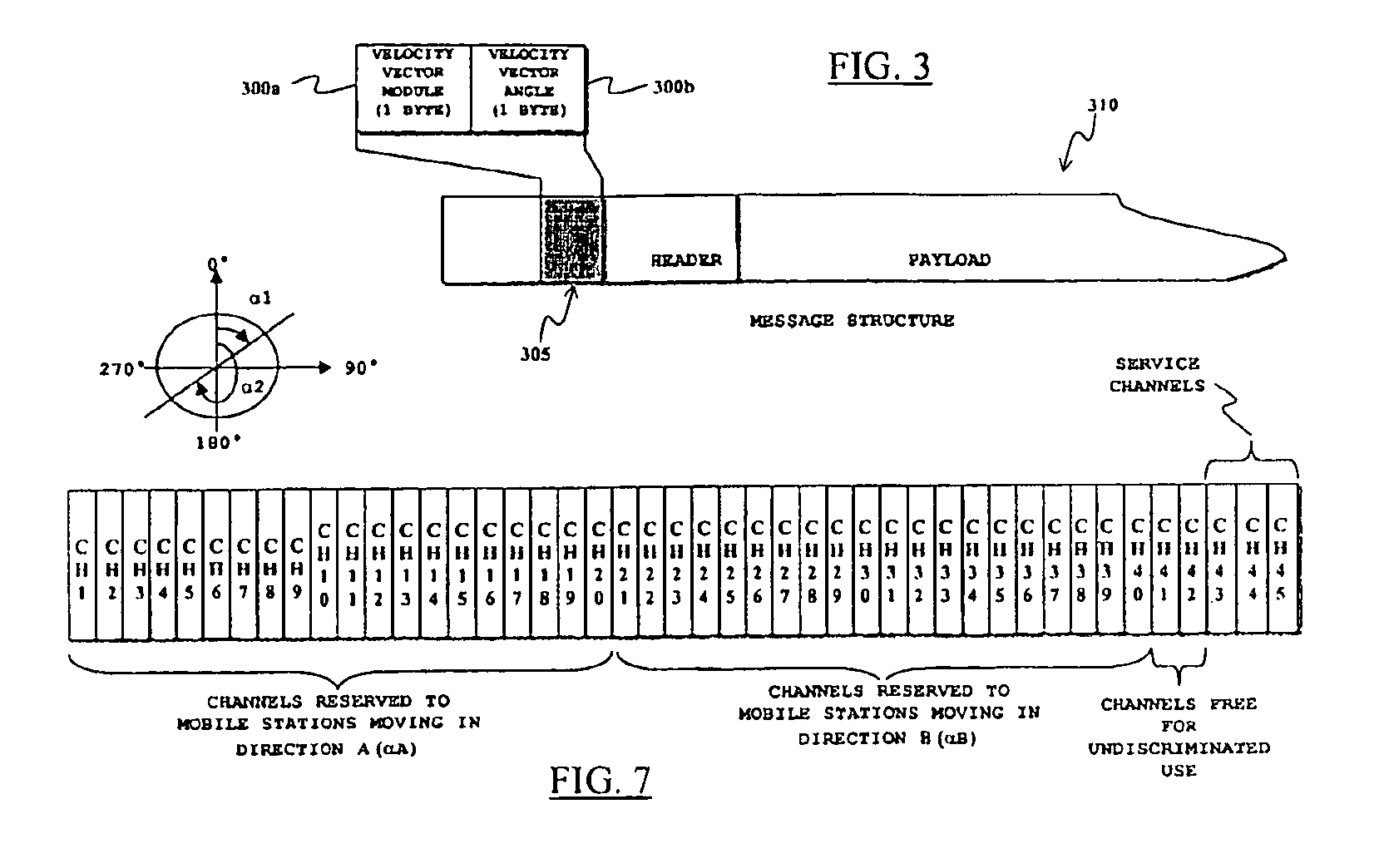Controlling access to a shared communication medium of a mobile ad-hoc network
a mobile ad-hoc network and communication medium technology, applied in the field of communication networks, can solve problems such as inability to set up, problems to be faced and solved, and the mac layer cannot receive correctly a data block, and achieve the effect of greatly reducing the collision rate between nodes in an ad-hoc network
- Summary
- Abstract
- Description
- Claims
- Application Information
AI Technical Summary
Benefits of technology
Problems solved by technology
Method used
Image
Examples
Embodiment Construction
[0064]With reference to the drawings, in FIG. 1 there is shown quite schematically an exemplary ad-hoc communication network scenario wherein a shared communication medium access control method according to an embodiment of the present invention can be advantageously applied.
[0065]In greater detail, the exemplary scenario herein considered is that of an ad-hoc communication network intended for inter-vehicle communications, particularly in the context of a highway or motorway or freeway 100, more generally any context wherein the vehicles mainly ride along a discrete and limited number (let it be said, roughly, not more than ten) of well-defined main ride directions; in the simple case herein considered, it is assumed that the vehicles ride in two main ride directions, respectively identified by arrows A and B in the drawing, corresponding to exemplary east-bound and west-bound lane pairs 100a, 100h of the highway.
[0066]Vehicles 105a1, 105a2, 105a3, riding the highway 100 in the dir...
PUM
 Login to View More
Login to View More Abstract
Description
Claims
Application Information
 Login to View More
Login to View More - R&D
- Intellectual Property
- Life Sciences
- Materials
- Tech Scout
- Unparalleled Data Quality
- Higher Quality Content
- 60% Fewer Hallucinations
Browse by: Latest US Patents, China's latest patents, Technical Efficacy Thesaurus, Application Domain, Technology Topic, Popular Technical Reports.
© 2025 PatSnap. All rights reserved.Legal|Privacy policy|Modern Slavery Act Transparency Statement|Sitemap|About US| Contact US: help@patsnap.com



